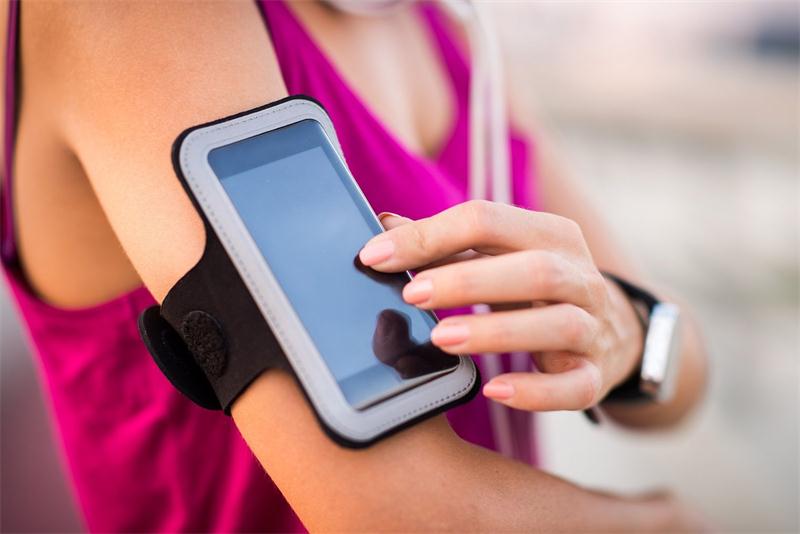What Is mHealth?
Wearable technologies and smart devices are increasingly becoming popular in the modern society. It is not surprising that hundreds of millions of people are using such devices in efficient and convenient monitoring as well as management of their health. This is what has given an ultra-new model of health delivery referred to as mHealth of mobile health. Can you define mhealth?

What is mHealth?
The definition of mHealth is that it is the use of wireless multimedia and mobile telecommunications to integrate as well as develop health care delivery systems that are successful. mHealth just denotes mobile health. It is a factor of modern medicine that is rapidly developing and one that promises to make health care more efficient and better. mHealth definition has become a challenge because of its dynamic nature. This is why the definition of mhealth slightly varies from industry top industry and from time to time.
The technology combines 2 very distinct factors that are present in the context of most developing nations i.e. inherent need for the delivery of improved healthcare as well as the rising penetration of mobile phone users that already exceeds those without one. Mobile telecommunications can provide an extra benefit of hands-free and wireless technology that can be optimized in the development of healthcare systems. This is because it does not require heavy equipment, connection junctures and ground infrastructure like internet services does. It is supported by personal digital assistances, patient monitoring devices, mobile phones as well as other wireless devices. Currently, mHealth is being utilized to monitor various health conditions such as asthma, insomnia, autism, diabetes and heart disease.
What is mHealth technology?
Now that we know mHealth definition, let us look at what is mHealth technology. It is a type of technology that performs functions like obtaining vital signs, the delivery of information to doctors as well as allowing for remote examinations on cell phones, tablets and many other portable devices.
mHealth technology mostly focuses on getting information immediately in order to diagnoses various illnesses, to track diseases as well as to provide timely information in undeserved countries to the public.
mHealth technology speeds education and training related to health issues to interns and students of medicine that are working in remote communities.
Applications
Some of the most common applications of digital health such as mHealth are:
i. The management of chronic disease.
ii. Telemedicine/ telehealth.
iii. Healthcare worker training and telecommunication through top video conferencing software like ezTalks Meetings.
iv. It is used in remote monitoring.
v. In the collection of remote data.
vi. Healthcare supply chain management.
vii. It is used in the tracking of disease and epidemic tracking.
viii. Treatment and diagnostic support. ix. Awareness and education.
Emerging trends
The following are some of the emerging trends in mHealth applications:
• Peer-to-peer personal health management for telemedicine
• Support for chronic care management like cancer, asthma and diabetes
• Community mobilization and health promotion
• Training as well as continuing professional development for healthcare workers
• Health-related mLearning for the general public
• Health services reporting and monitoring
• Health extension services
• Clinical care and remote monitoring via online videoconferencing software such as ezTalks Meetings that easily connects to the internet.
• Patient safety systems
• Pharmaceutical supply chain integrity
• Point-of-care clinician support that is inclusive of an evidence-based formulary, in addition to database as well as decision support information
• Emergency response systems
• Human resources coordination, effective management and even supervision
• Home-based remote patient monitoring
Benefits
The following are some of the benefits associated with the use of mHealth:
- Decrease in healthcare spending
Almost every country in the globe face the challenge of an increase in the cost of healthcare. These costs can be prevented via early detection and treatment.
- Health population
mHealth provides a way of reducing health care costs through the empowerment of citizens to effectively intervene in healthcare matters that pertain to themselves in a timely fashion. This is possible via a technology that is affordable and already in existence.
- Optimization of access to quality healthcare
It helps in addressing the shortage of highly skilled healthcare workers as well as reducing the burden on those attempting to bridge this gap.
Patients can receive and make calls, send text messages and even voice messages that are related to organizing transport to health services, contacting health workers, treatment adherence and health education.
mHealth provides healthcare workers with all the resources they require to interact with clients, receive diagnostic support, analyze data, collaborate with colleagues and to gain access to the most up-to-date clinical guidelines.
SMS alerts facilitate the achievement of positive outcomes. This has a proven ability to affect behavior in a more superior manner in comparison to television and radio campaigns.
It allows for the achievement of remote data collection, this has the effect of decreasing the health information gap in existence in numerous countries. Furthermore, this allows officials to easily evaluate just how effective public health initiatives are, enables them to optimize programs and policies as well as the appropriate allocation of resources.
mHealth supports chronic care management and medication adherence. This is because it can notify physicians when a patient is not taking medication as prescribed and therefore needs intervention.
mHealth has very many benefits, the ones listed above are far from exhaustive.
Conclusion
The above insightful information assists you to accurately define mhealth and what is mhealth technology. Today, mHealth activities can be almost everywhere across private and public sectors, in public health as well as in both developing and developed countries.